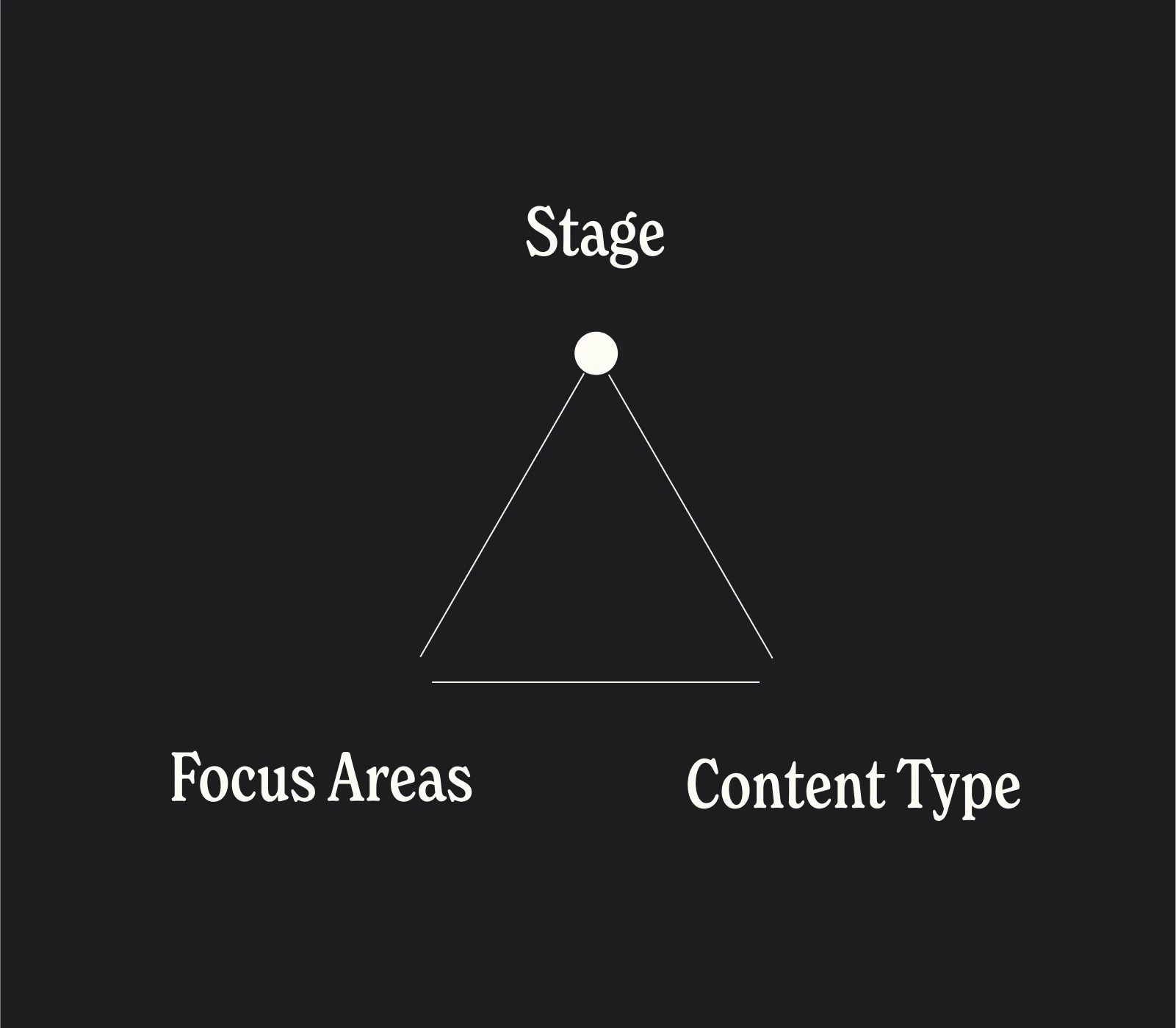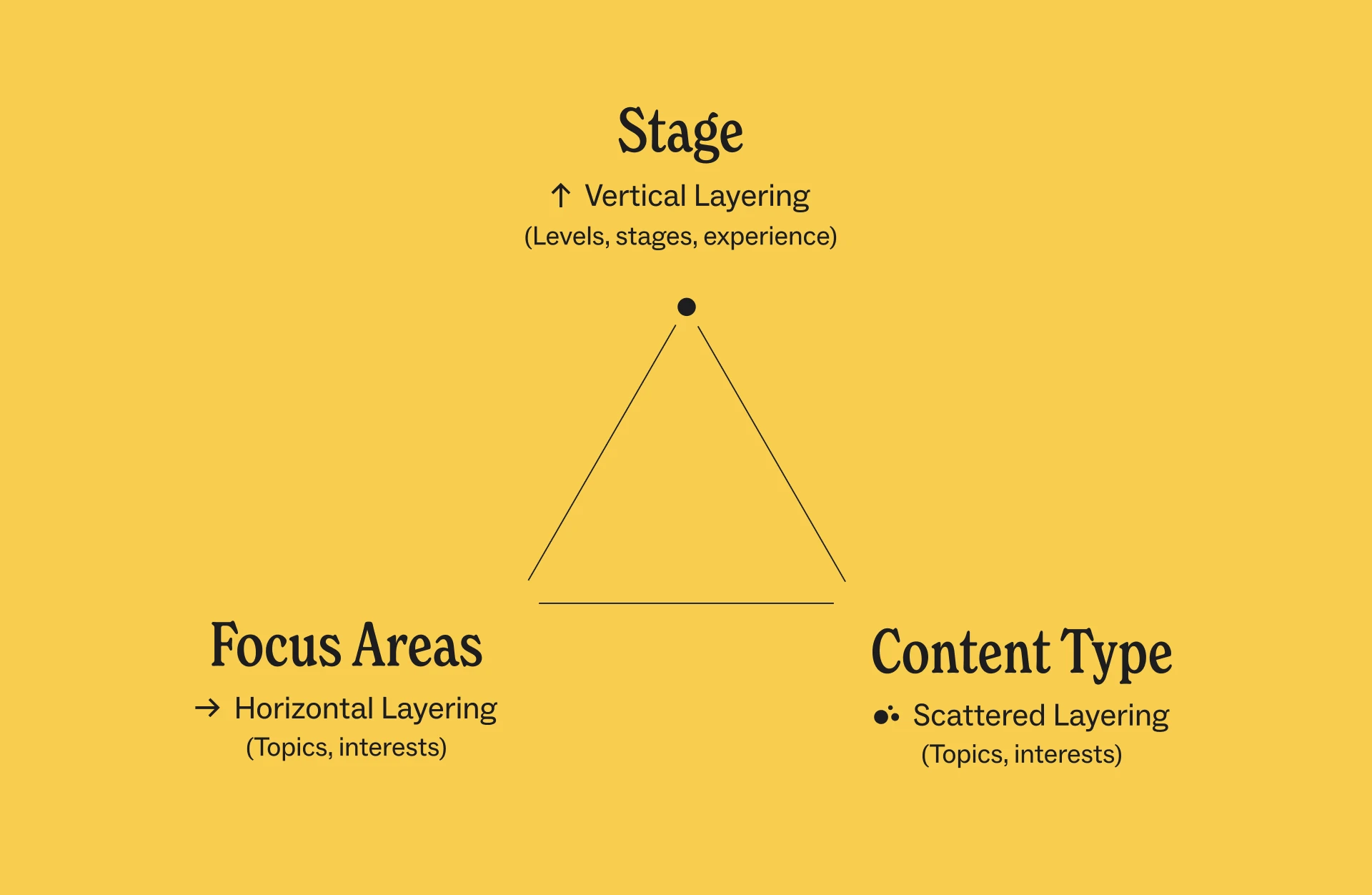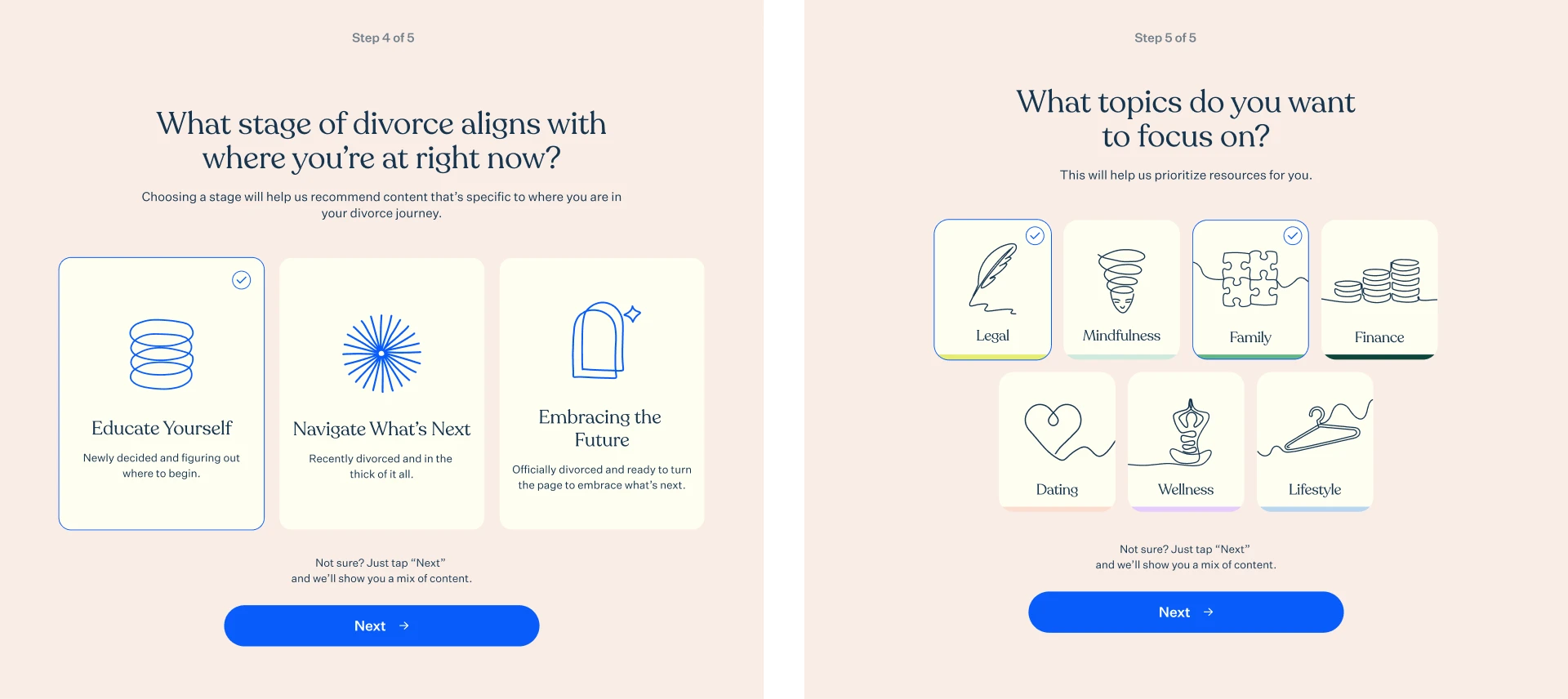
Does this sound familiar?
You've signed up for a new membership platform. You're excited about the content, ready to dive in, and then... you're hit with 500 pieces of content organized into 47 different categories.
Where do you even start?
If you're like most people, you spend 10 minutes clicking around, feel overwhelmed, and either bookmark it for "later" (spoiler: later never comes) or cancel your subscription before the next billing cycle.
Sound familiar?
This is the content experience most creators accidentally create. They build incredible libraries of valuable content, but they make users do all the work to find what's relevant to them.
Not all personalization requires an algorithm
When most creators hear "personalization," they think of TikTok's FYP. That's algorithmic personalization at its finest: a highly sophisticated, proprietary system that analyzes every tap, swipe, and second of watch time to serve up exactly what will keep you scrolling.
And yes, it's incredibly effective (check your screen time report if you don’t believe me)
It's also incredibly expensive and complex to build.
But it doesn’t have to be so intense: there's another type of personalization that's much more achievable and often just as effective for creator-led content products.
Instead of trying to predict what someone might want based on their behavior, you can simply ask them what they want and then deliver it.
Revolutionary, we know.
This approach works especially well for membership platforms and subscription products where you have a direct relationship with your customers. The key is understanding that personalization exists on a spectrum, and you don't need to be at the TikTok end to create massive value.
The triangular approach to mixed content

When we design personalized content experiences, we often use what we call a "triangular model" with three types of layering:
Horizontal Layering: What topics do you care about?
These are the different focus areas or interest categories within your content experience. Think broad topics that appeal to different segments of your audience.
For example, a business creator might have horizontal layers for marketing, operations, finance, and leadership. A user might be deeply interested in marketing and finance, but couldn't care less about operations.
Vertical Layering: How deep do you want to go?
This is about experience level and depth within any given topic. Are you a beginner who needs foundational concepts, or are you advanced and looking for implementation tactics?
Vertical layers often follow a progression: high-level overviews, foundational principles, practical applications, and advanced strategies.
Content Type: How do you prefer to learn?
This covers the preferences someone might have for different formats of content: long-form videos, short clips, written guides, worksheets, templates, audio content, or interactive tools.
Some people are visual learners who love video content. Others prefer to read and reference written materials. Still others want downloadable resources they can use immediately.
The valuable stuff happens during onboarding when you identify where someone sits across all three layers, then immediately serve them the most relevant content.
A live example about…divorce (stay with me)
We recently built a platform called My Next Chapter, designed to help people navigate divorce. This is obviously a deeply personal, emotionally charged situation where irrelevant content isn't just annoying…it can be genuinely harmful.
Here's how we applied the triangular model:
Vertical Layer (Where are you in the process?):
- Considering divorce
- Currently going through divorce
- Planning life after divorce
Horizontal Layer (What aspects matter to you?):
- Legal guidance
- Financial planning
- Wellness and mental health
- Co-parenting and family
- Dating and relationships
- Lifestyle
Content Type:
- Expert video sessions
- Step-by-step guides
- Downloadable worksheets
- Community discussions
- Quick reference materials
During onboarding, we ask a few strategic questions to understand where someone is in their journey and what topics are most relevant to their situation.
Someone who's just considering divorce and has no children likely doesn't need content about co-parenting strategies or dating advice. They need legal information and emotional support for making difficult decisions.

By identifying their vertical position (considering) and relevant horizontal layers (legal, wellness), we can populate their dashboard with the most useful content immediately.
No overwhelm, no irrelevant suggestions, just what they need when they need it.
Why this matters more than you think
Getting personalization right isn't just about creating a better user experience (although it definitely does that). It directly impacts your business metrics in ways that compound over time.
Faster time to value: When people find relevant content immediately, they hit their "aha moment" faster. We dove deep into this concept in an earlier newsletter, which you can check out here. The quicker someone experiences the value of your product, the more likely they are to become long-term customers.
Reduced churn: People don't cancel subscriptions to products they actively use and find valuable. Personalization increases engagement by making content feel specifically curated for each user.
Higher lifetime value: Engaged users stay longer, buy additional products, and refer others. They become your best customers instead of people who signed up and forgot about you.
Better word-of-mouth: When someone feels like your product "gets them," they're much more likely to recommend it to others with similar needs.
How to implement this (without hiring TikTok's engineering team)
You don't need a massive tech budget to create personalized experiences. Here's how to start:
1. Map your content across the three layers
Audit your existing content and categorize it by horizontal topic, vertical depth, and content type. This exercise alone will reveal gaps and opportunities. Where do you have gaps?
2. Design a strategic onboarding flow
Ask 3-5 thoughtful questions that help you understand:
- What topics are most relevant to them right now
- Where they are in their journey (experience level)
- How they prefer to consume content
3. Create dynamic dashboards (optional)
Based on their onboarding responses, populate their initial dashboard with the most relevant content. Big caveat here that this is easier said than done, and depending on what platform you’re currently on, this may or may not be possible.
The bottom line
Most creators are sitting on goldmines of valuable content as part of their product experiences, but they're making their audience do all the work to find what's relevant.
By implementing even basic personalization through strategic onboarding and content organization, you can create experiences that feel custom-built for each user.
Your audience doesn't need another overwhelming content library. They need content that feels like it was created specifically for them, delivered exactly when they need it.
That's not algorithmic magic. That's just thoughtful design.



















